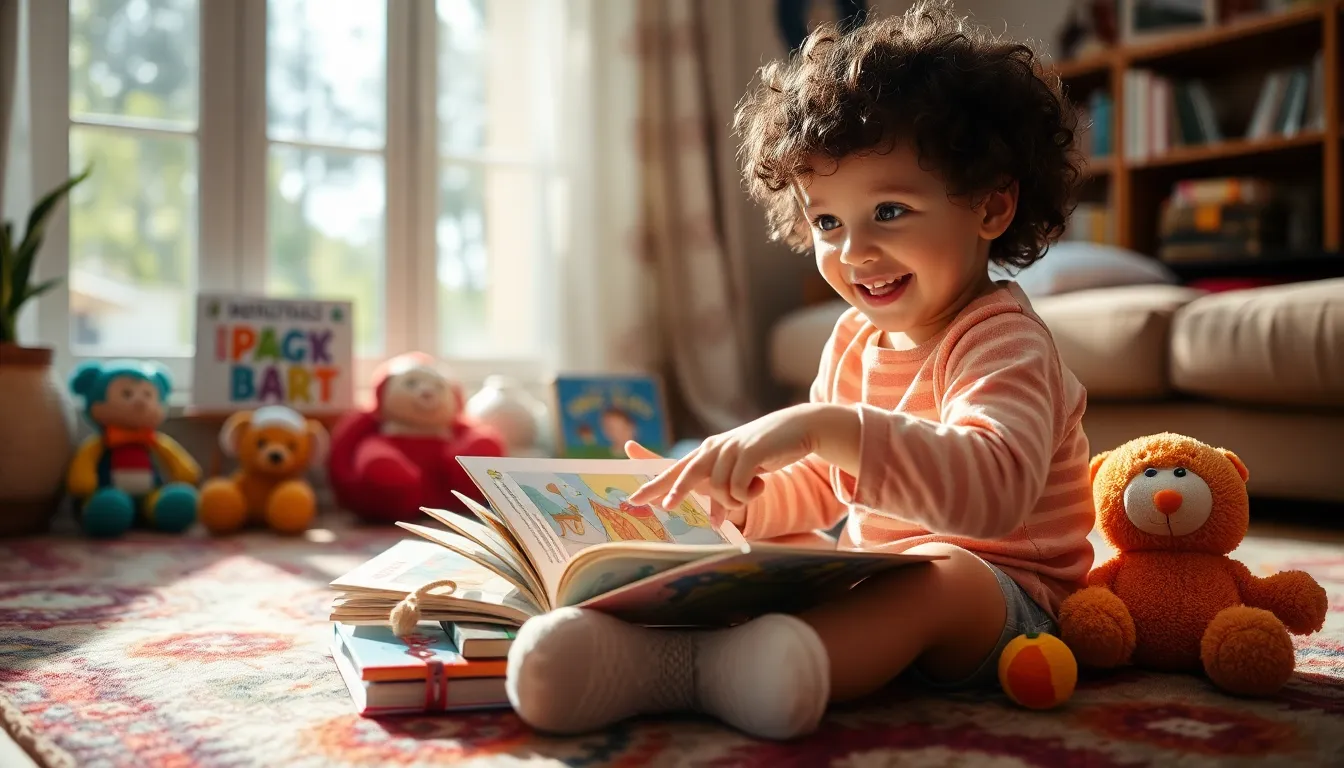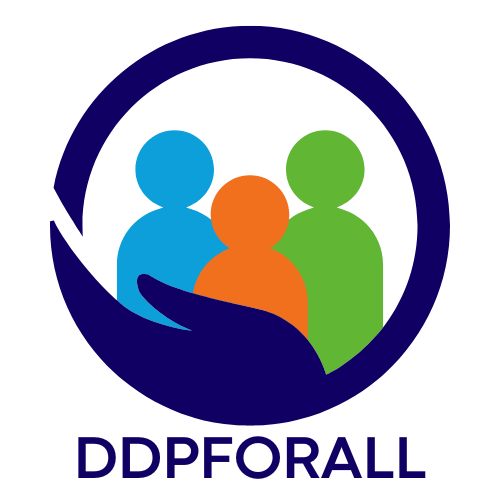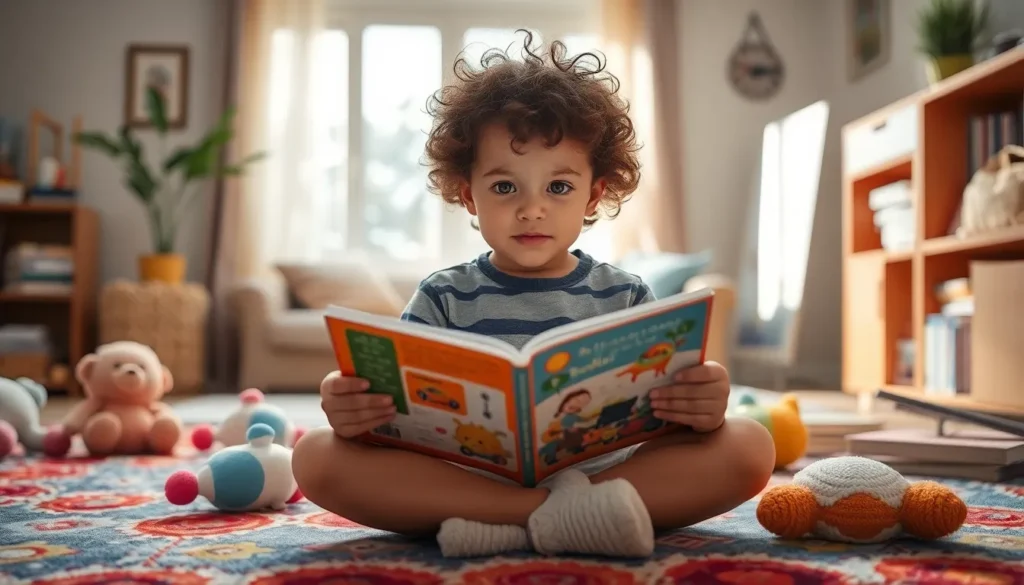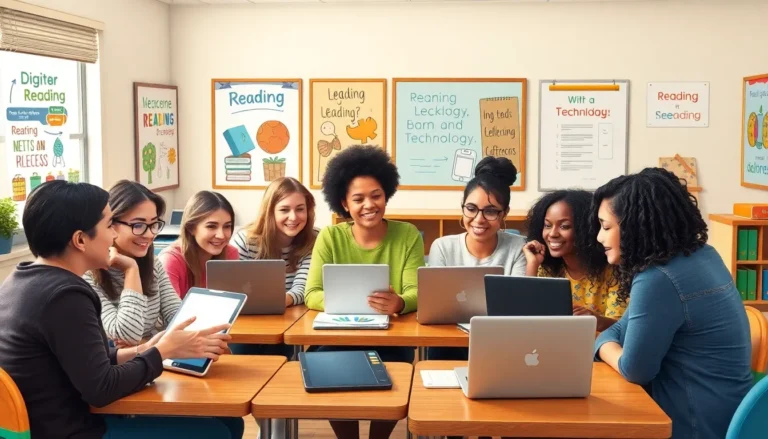Table of Contents
ToggleReading isn’t just about decoding words; it’s a thrilling adventure through the pages of imagination. From the moment a child stumbles upon a picture book to the day they devour novels like candy, each stage of reading development is a milestone worth celebrating. Understanding these stages not only helps parents guide their little readers but also ensures they don’t miss out on the joy of discovering new worlds.
Imagine a toddler excitedly flipping through a book, pointing at colorful pictures and babbling away. Fast forward a few years, and that same child is lost in a fantasy realm, battling dragons or solving mysteries. Each phase is crucial, and knowing what to expect can transform reading from a chore into a cherished ritual. So let’s dive into the fascinating stages of reading development and unlock the secrets to nurturing a lifelong love for books.
Understanding Reading Development Stages
Reading development progresses through distinct stages, each vital for nurturing a child’s literacy skills. Recognizing these stages helps caregivers provide targeted support and cultivate a love for reading.
Importance of Reading Development
Reading development plays a crucial role in a child’s overall academic success. Strong reading skills contribute to vocabulary expansion, critical thinking, and comprehension abilities. Children equipped with these skills tend to excel in various subjects, not just language arts. Engaging with texts early promotes creativity and imagination. Supporting reading development lays a foundation for lifelong learning and appreciation of literature.
Overview of Stages
Reading development consists of several clear stages. Infants often start by looking at pictures, fostering visual recognition. Toddlers transition to recognizing words and simple sentences through interactive experiences. Preschoolers engage with rhymes and stories, enhancing phonetic awareness. Early elementary students begin decoding words and understanding basic grammar. As they advance, children explore chapter books and complex plots, deepening comprehension skills. Each stage builds upon the last, creating a more profound connection with text.
Early Emergent Reading Stage

The early emergent reading stage marks a child’s initial exploration of printed text. During this stage, children begin to develop foundational skills essential for reading.
Characteristics of Early Emergent Readers
Early emergent readers show several unique characteristics. Recognition of familiar logos, signs, or simple words stands out. They often enjoy listening to stories and engage with illustrations. Pointing to pictures while narrating stories reflects their understanding. Additionally, children exhibit a tendency to mimic reading behaviors, such as holding a book and pretending to read. They may also begin to understand the concept of left-to-right reading. Through repeated exposure, these young readers gradually build vocabulary and strengthen their connection with printed materials.
Activities to Encourage Early Readiness
Engaging children in focused activities boosts early reading readiness. Sharing picture books that feature repetitive phrases helps reinforce word recognition. Involving them in storytelling promotes language development. Crafting simple rhymes or songs encourages phonemic awareness. Playing with letter magnets on the fridge supports letter recognition and spelling practice. Encouraging children to name objects in their surroundings enhances vocabulary. Visiting libraries for storytime fosters a love for books and a sense of community. Participation in these activities lays a strong groundwork for future literacy skills.
Emergent Reading Stage
The emergent reading stage marks the initial adventure into printed text for children. This stage typically occurs from ages 0 to 5. During this period, children develop a sense of curiosity about words and stories.
Key Milestones in Emergent Reading
Recognizing familiar logos indicates early literacy growth. Pointing to pictures and naming items signifies increased word recognition. Enjoying and participating in storytelling enhances language skills. Using pictures for narrative development occurs frequently in this stage. Expressing interest in turning pages shows engagement with text. Pretending to read demonstrates understanding of book conventions. Acting out stories reveals comprehension on a deeper level. Parents can watch for these milestones to gauge reading readiness.
Recommended Resources for Emergent Readers
Board books provide sturdy options for infants and toddlers. Picture books with repetitive phrases capture attention and encourage participation. Storytime at libraries offers engaging experiences with diverse literature. Early literacy apps combine fun with educational values for mobile learning. Rhyming books introduce phonemic awareness and sound patterns. Interactive books invite children to touch and explore the text. Selecting age-appropriate materials supports confidence and motivation in reading. These resources foster a positive relationship with books and reading.
Early Transitional Reading Stage
The early transitional reading stage marks a pivotal phase in a child’s literacy development. Children start to embrace more complex reading materials and demonstrate a growing understanding of text.
Skills Developed in Early Transitional Reading
Children at this stage develop decoding skills, allowing them to recognize sight words and use context clues to understand meaning. Fluency increases as they read aloud with better expression. Comprehension skills deepen, enabling them to summarize stories and make predictions. Vocabulary expansion occurs through exposure to new words in varied contexts. They begin to grasp basic grammar structures, using punctuation to aid in understanding. This stage fosters a sense of independence, as children choose and navigate their reading material.
Strategies to Support Transition
Parents can enhance the transitional reading stage by engaging children with diverse texts that challenge and interest them. Regularly visiting libraries helps expose children to a wide range of genres. Incorporating discussion about books encourages critical thinking and comprehension. Using graphic organizers can assist in developing their summarization skills. Encouragement to read independently builds confidence and fosters a love for stories. Structured reading sessions can create a routine that reinforces these important skills and nurtures their reading journey.
Transitional Reading Stage
The transitional reading stage represents a crucial turning point in literacy development, where children advance to more complex texts and deepen their comprehension skills.
Indicators of Transitional Reading Proficiency
Key indicators highlight a child’s growth during this stage. Children start decoding multisyllabic words and demonstrate improved fluency. They recognize and use a growing list of sight words. Additionally, comprehension skills emerge through summarizing stories and making predictions. The ability to infer meaning from context signals a deeper understanding of the text. Children also show improved engagement during reading sessions, indicating their excitement about stories and characters. Their vocabulary expands considerably, allowing them to discuss themes and ideas more articulately. These markers contribute to a child’s overall reading development.
Tips for Advancing Reading Skills
Several strategies promote further development during the transitional stage. Providing a diverse range of reading materials, including chapter books and nonfiction texts, encourages exploration. Discussing stories enhances critical thinking and comprehension. Using graphic organizers helps children visualize story structure and elements. Establishing a regular reading routine promotes consistency and fluency. Incorporating reading games can make the process enjoyable while reinforcing skills. Encouraging children to express their thoughts about texts fosters a love for reading. Engaging with local libraries can also offer valuable resources and community support. These methods significantly contribute to advancing literacy skills effectively.
Fluent Reading Stage
The fluent reading stage signifies a key point in a child’s reading development. At this level, readers engage with text smoothly and effortlessly, showcasing a deeper understanding of content.
Features of Fluent Readers
Fluent readers demonstrate several characteristics, including reading with expression and appropriate pacing. They efficiently decode unfamiliar words and integrate context for improved comprehension. Vocabulary skills expand significantly, allowing these readers to navigate diverse genres with ease. Additionally, fluent readers recognize literary elements, such as themes and character development, enriching their reading experience. Comprehension strategies become second nature, enabling them to summarize and make inferences effectively. Overall, this stage reflects a seamless interaction with texts.
Ways to Foster Lifelong Reading Habits
Fostering lifelong reading habits requires consistent engagement with books. Parents can create inviting reading environments, filled with a variety of genres to spark interest. Regular library visits expose children to new titles and community events. Establishing a reading routine helps emphasize the importance of daily reading, encouraging children to explore stories independently. Discussions about books promote critical thinking and a deeper connection to the material. Utilizing technology and interactive reading apps provides additional resources, making reading an enjoyable and diverse experience.
Understanding the stages of reading development is essential for nurturing a child’s literacy journey. Each stage builds a foundation for skills that extend beyond reading, influencing overall academic success. By recognizing and supporting these stages, parents and caregivers can instill a love for reading that lasts a lifetime.
Engaging children with diverse texts and encouraging discussions not only enhances comprehension but also fosters creativity and critical thinking. As children progress through the stages, their connection with literature deepens, paving the way for lifelong learning. Ultimately, the journey of reading is one that opens doors to imagination and knowledge, enriching a child’s world in countless ways.







